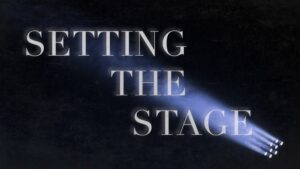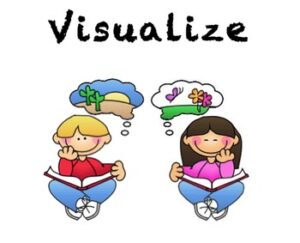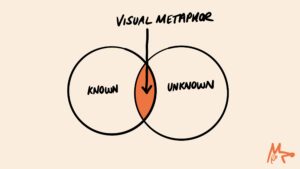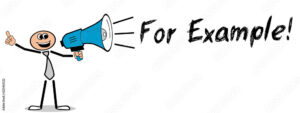Stories are a communal currency of humanity. Imagine you’re sitting around a campfire, the flickering flames casting dancing shadows, and someone begins to tell a story. Instantly, you’re drawn in, hanging on every word, visualizing the scenes, feeling the emotions. This is the power of storytelling—it’s magnetic, memorable, and deeply human. Now, what if you could harness that same power to present your research? Picture your research paper or presentation not as a dull collection of data and analysis but as a vivid, engaging narrative that pulls your audience into the world you’ve explored.

Welcome to the world of academic storytelling, where the often dry and impenetrable world of research meets the engaging and accessible world of narrative. Academic storytelling is about weaving your data and findings into a compelling story that captivates your audience, making your research not just understood but felt and remembered. While storytelling is often associated with qualitative research, it’s equally important in quantitative studies. By integrating narrative elements, data analysis becomes more compelling and memorable, justifying the lab night and late nights during PhD research. It’s about turning numbers and statistics into a narrative that speaks to the reader on a human level. Just as a well-told story can make a campfire gathering unforgettable, a well-crafted narrative can make your research stand out in the minds of your audience.
The purpose of this blog is to help you, as a PhD student, enhance your research presentations and papers by incorporating storytelling techniques. Think of it as learning to tell your research story in a way that’s not only informative but also engaging and inspiring. Whether you’re defending your dissertation, presenting at a conference, or writing a journal article, adding a narrative touch can transform your work from mundane to magnificent. We’ll explore how you can make your findings more engaging and memorable, ensuring your hard work leaves a lasting impact. So, let’s embark on this journey of blending the art of storytelling with the rigor of academic research, and discover how to make your academic work not just a presentation of facts, but a story worth telling.
Elements of a Compelling Academic Story
Crafting an academic story involves several key elements that work together to create a narrative that is both informative and engaging. Just like any good story, your research needs a clear structure, well-defined characters, and a gripping conflict that leads to a satisfying resolution. In quantitative research, a clear structure helps in presenting your hypotheses, methodologies, and results in a logical flow. For qualitative research, the structure brings coherence to the narrative. Mixed methods combine the strengths of both, ensuring a comprehensive and engaging presentation of your findings. Let’s break down these elements and see how they apply to your research narrative.
A clear structure is paramount. Think of your research paper as a well-crafted novel, with a beginning, middle, and end. In quantitative research, a clear structure helps in presenting your hypotheses, methodologies, and results in a logical flow. For qualitative research, the structure brings coherence to the narrative. Mixed methods combine the strengths of both, ensuring a comprehensive and engaging presentation of your findings.
The introduction is the opening scene where you set the stage for your audience, providing the context they need to understand the journey they’re about to embark on. This is where you draw your readers in, explaining the significance of your research, posing the central question or hypothesis, and giving a sneak peek of what’s to come. It’s your chance to grab their attention and make them want to read more (Booth, Colomb, & Williams, 2016). If you find this challenging, seeking writing assistance can help you frame your introduction effectively.

The body of your research is where the plot thickens. Here, you present your data and findings, but instead of merely listing facts, think about how to weave them into a narrative that builds intrigue and engagement. Each piece of data should contribute to the overall story, helping to answer the research question and build towards the conclusion. Use a clear, logical progression to guide your reader through your research journey, keeping them engaged with each new piece of information. For instance, if your research is about the effects of a new teaching method on student performance, you could structure your body by first describing the traditional methods, introducing the new method, and then presenting the comparative results (Murray, 2017). Do not also forget that alignment of your data with your research questions enhances the clarity and impact of your findings.
Just as a story needs a strong ending, your research requires a compelling conclusion. Summarize the key findings, discuss their implications, and suggest possible future research directions. The conclusion is your opportunity to leave a lasting impression, ensuring your audience walks away with a clear understanding of your research’s significance and impact. It’s akin to the resolution in a novel where all loose ends are tied up, and the reader is left with a sense of closure and insight (Thomas & Hodges, 2010).
Characters and context are crucial in making your research relatable and memorable. In quantitative research, your ‘characters’ could be the variables or data points, while in qualitative research, they might be the participants or case studies. Mixed methods allow for a richer context by combining statistical trends with personal stories. In academic storytelling, these characters can be your subjects, phenomena, or even the variables in your study. Providing rich context about these characters helps your audience understand the setting of your research.
For example, if you’re studying the effects of a new educational intervention on elementary school students, your characters are the students, teachers, and possibly the school environment. Give them depth by explaining their roles and the context in which they interact. This not only makes your research more relatable but also helps to humanize the data (Patton, 2015). If you’re unsure about how to analyze and present this data, collaborating with data analysts can provide valuable insights.
Let’s illustrate this with a short story. Imagine Norah, a PhD student in education, who is researching innovative teaching methods to improve literacy rates among elementary school students. Instead of merely presenting dry statistics, she introduces her characters: the enthusiastic teacher implementing the new method, the diverse group of students eagerly participating, and the supportive school administration. Providing context and background on each character, helps Norah to paint a vivid picture that her audience can easily visualize. This approach not only makes her research more engaging but also helps her audience understand the real-world impact of her findings.

At the heart of every great story is a conflict that needs to be resolved. In your research, this conflict is the problem you’re addressing. Clearly define the problem statement and explain why it’s important. Then, guide your audience through the process of investigating this problem, showing them the challenges and obstacles you encountered along the way. The resolution comes with your findings, where you reveal the answers to your research questions and discuss how these findings resolve the initial conflict.
This structure not only keeps your audience engaged but also emphasizes the importance and impact of your research. For instance, if yovur research addresses the issue of declining literacy rates among children, the conflict would be the factors contributing to this decline, and the resolution would be your findings on effective interventions (Creswell & Poth, 2018).
Techniques for Crafting Your Research Narrative
Incorporating storytelling techniques into your research narrative can transform your work from merely informative to genuinely compelling. For quantitative research, storytelling can contextualize data, making it more relatable. For qualitative research, it enhances the depth and richness of the narrative. Mixed methods leverage both approaches, providing a balanced and thorough understanding. To help you craft an engaging and memorable research narrative one of the approaches you would want to consider is starting your research narrative with a hook.
This is like opening a novel with a gripping first line. It immediately captures your audience’s attention and piques their curiosity. An effective hook can be an intriguing question that your research aims to answer, a compelling quote from a prominent figure in your field, or an anecdote that sets the stage for your study. For example, if you’re researching the effects of social media on mental health, you might start with a question like, “Have you ever wondered how scrolling through your social media feed affects your mood?”.
Alternatively, you could begin with a quote from a well-known psychologist who has studied social media’s impact on mental health. A personal anecdote about a moment of realization regarding your research topic can also serve as a powerful hook. If you find this challenging, seeking writing consultants can help you frame your introduction effectively (Clark, 2006).

Vivid descriptions are also essential for bringing your research to life. By using descriptive language, you can create a vivid picture in your reader’s mind, making your findings more relatable and easier to understand. Describe the setting where your research took place, the characteristics of your study participants, and the context of your experiments or surveys. For instance, if you conducted field research in a rural community, describe the sights, sounds, and atmosphere of the location. This not only helps your readers visualize the context of your study but also adds depth and richness to your narrative (Denzin & Lincoln, 2018).
Analogies and visual metaphors are also powerful tools for explaining complex concepts in a relatable way. They help your audience understand abstract or complicated ideas by comparing them to something familiar. For example, if your research involves intricate statistical models, you might compare the process of building these models to assembling a puzzle, where each piece of data fits together to reveal a bigger picture. Using analogies and metaphors makes your research more accessible and easier to grasp for a broader audience, enhancing their overall understanding and engagement. If you’re unsure how to craft these comparisons, working with experienced editors can provide valuable insights (Lakoff & Johnson, 1980).

Do not also forget that integrating quotes and anecdotes into your research narrative adds authenticity and a human touch to your findings. Quotes from study participants, experts in the field, or relevant literature can provide valuable perspectives and support your arguments. Personal stories or anecdotes related to your research can also illustrate key points and make your data more relatable. For instance, if you’re studying the impact of a new teaching method, include quotes from teachers and students who have experienced its effects firsthand. Anecdotes about specific moments during your research can also highlight significant findings or unexpected outcomes, making your narrative more engaging and memorable (Riessman, 2008).
Examples of Effective Academic Storytelling
Imagine you’re in a dimly lit theater, the audience hushed in anticipation as the curtains slowly part to reveal the stage. On this stage, instead of actors, we have researchers presenting their work. Some presentations are dry and methodical, losing the audience in a sea of data and jargon. But then, a research analyst steps up and begins to weave a tale so compelling, so vivid, that the audience leans in, captivated by every word. This is the power of effective academic storytelling.
Take, for instance, a groundbreaking study on climate change’s impact on polar bear populations. Whether your study involves statistical data on climate patterns (quantitative) or interviews with affected communities (qualitative), combining these approaches (mixed methods) can provide a holistic view that is both scientifically robust and deeply human. The researchers could have simply presented statistics and graphs showing declining numbers and shrinking habitats. Instead, they chose to tell the story of a single polar bear named Nanook. They described Nanook’s journey across melting ice, his struggle to find food, and his interactions with other bears. By personifying Nanook and detailing his plight, the researchers made their findings relatable and emotionally impactful. The audience wasn’t just absorbing data; they were rooting for Nanook and, by extension, becoming more invested in the broader issue of climate change.

Why was this approach so effective? First, the researchers employed vivid descriptions to paint a picture of Nanook’s world. They didn’t just say the ice was melting; they described the shimmering blue ice cracking and breaking beneath Nanook’s feet. This use of descriptive language transported the audience into Nanook’s environment, making the abstract issue of climate change tangible and urgent. If you find this challenging, seeking guidance from writing experts can help you frame your introduction effectively (Johnson & Christensen, 2019).
Another technique they used was building suspense. Instead of revealing all their findings at once, they structured their presentation like a narrative, gradually unfolding Nanook’s journey. This kept the audience engaged, as they were eager to know what happened next. They didn’t just present a problem; they created a story arc with a beginning, middle, and end, complete with challenges and a resolution. Analogies and metaphors also played a crucial role. The researchers compared the fragile ice to a precarious tightrope, with Nanook as a tightrope walker balancing on the edge of survival. This analogy made the complex scientific data more relatable and easier to understand. It also evoked strong imagery, which is a hallmark of effective storytelling (Kreps, 2015).
Integrating quotes and anecdotes added another layer of depth. The researchers included quotes from Inuit hunters who had observed the changing ice patterns and the bears’ struggles. These personal stories and firsthand accounts added authenticity and a human touch to the scientific data. They weren’t just presenting facts; they were sharing lived experiences that underscored the importance of their findings. Another stellar example comes from a study on innovative educational methods. The researchers could have drowned their audience in statistical comparisons and educational theory. Instead, they chose to follow the journey of a fictional student named Alex.
They described Alex’s initial struggles with traditional learning methods, his interactions with innovative teaching techniques, and his eventual academic success. By framing their data within Alex’s story, they created a compelling narrative that illustrated the real-world impact of their research. The effectiveness of this approach lies in its ability to humanize the data. The audience could see Alex as a real person and empathize with his challenges and triumphs. This emotional connection made the data more memorable and impactful. The researchers also used descriptive language to vividly portray Alex’s classroom experiences, making the theoretical concepts come alive. If you’re unsure how to craft these comparisons, working with professional writing services can provide valuable insights (McMillan & Schumacher, 2010).
They built suspense by detailing Alex’s journey step by step, creating anticipation for the audience. Each phase of Alex’s experience was carefully laid out, with the researchers revealing new insights at each stage. This kept the audience engaged and eager to learn more. Analogies and metaphors were used to explain complex educational theories in simple, relatable terms. For instance, they compared traditional education methods to an old, rusted key struggling to open a door, while innovative methods were likened to a master key smoothly unlocking the potential within each student. These comparisons made the concepts easier to grasp and more impactful (Mertens, 2015).
Practical Tips for PhD Students
Imagine you’re a conductor leading an orchestra. Each instrument represents a different aspect of your research, and your job is to harmonize them into a symphony that captivates your audience. To become the maestro of your academic storytelling, knowing your audience is crucial. Tailoring your narrative to your audience’s level of understanding is like selecting the right instruments for your symphony. If you’re presenting to fellow experts in your field, you can dive into technical details and complex theories.
However, if your audience includes individuals from outside your field, you’ll need to simplify your language and provide more background information. For instance, when explaining a complex statistical method, you might compare it to a cooking recipe where each ingredient (data point) is essential for creating the final dish (result). Understanding your audience allows you to strike the right balance between detail and clarity, ensuring your message resonates effectively (Hyland, 2009).
If you’re unsure how to gauge your audience’s needs, consulting with a writing guru can provide valuable insights. As a PhD student this can be equated to carefully combining quantitative data’s precision with qualitative data’s depth can make your research more comprehensive and engaging. Tailoring your narrative to include both statistical analyses and personal stories can bridge the gap between data and human experience.

Practice and feedback are indispensable for honing your storytelling skills. Just as musicians rehearse tirelessly before a performance, you should practice presenting your research narrative. Rehearse your presentation multiple times, ideally in front of a supportive audience who can provide constructive feedback. This could be your peers, advisors, or even friends and family. Constructive criticism helps you identify areas where you might need to clarify or expand your narrative. For example, you might realize that your explanation of a key concept is too brief or that certain sections lack the engaging elements needed to maintain interest. Regular practice and feedback ensure that your narrative flows smoothly and that you can deliver it confidently and effectively (Day, 2018).
Balancing facts with narrative is like ensuring each instrument in your orchestra plays at the right volume. The storytelling should enhance, not overshadow, the data. It’s important to remember that while a compelling narrative can make your research more engaging, the integrity of your data must always remain intact. Use storytelling techniques to contextualize your findings and make them relatable, but avoid embellishing or altering the facts to fit your story. For instance, when presenting data on a new medical treatment’s effectiveness, you can share a patient’s story to illustrate the treatment’s impact, but ensure the story accurately reflects the data. This balance maintains the credibility of your research while making it accessible and memorable (Sword, 2012). If you need help finding this balance, professional editorial services can assist in refining your narrative without compromising the data’s accuracy.
Consider the story of Risper, a PhD student researching renewable energy solutions. Emily knew her audience included policymakers with limited technical knowledge. She tailored her narrative by using simple analogies to explain complex concepts, like comparing the storage of solar energy to saving money in a bank. She practiced her presentation with colleagues and mentors, who provided feedback on areas that were too jargon-heavy or lacked engagement. Risper also balanced her narrative by using real-world examples to illustrate her data, such as a small town successfully implementing solar panels to reduce energy costs. By following these practical tips, Emily delivered a presentation that was both informative and captivating, leaving a lasting impression on her audience.

Conclusion
To conclude with another analogy, imagine you’re at a dinner party, and you meet two people who both want to tell you about the same event. The first person lists a series of facts and figures, while the second person tells a vivid, engaging story that brings the event to life. Which person’s account are you more likely to remember and share with others? The answer is obvious—the storyteller captures your attention and makes the experience memorable.
Similarly, in the world of academic research, storytelling transforms your work from a collection of data points into a narrative that resonates with your audience. By incorporating the elements of a compelling story—clear structure, relatable characters, and engaging conflict and resolution—you can make your research both informative and captivating. Techniques such as starting with a hook, using vivid descriptions, building suspense, employing analogies and metaphors, and integrating quotes and anecdotes, bring your narrative to life.
Consider the journey of a PhD student named Alex. Alex was struggling to present his research on renewable energy in a way that engaged his audience. He sought advice from writing experts, who helped him frame his findings within the story of a small town that successfully implemented renewable energy solutions. He practiced his presentation with peers, received constructive feedback, and refined his narrative to balance facts with engaging storytelling. When the day of his presentation arrived, Alex’s audience was not only informed but also inspired by the story he told.
Just as Alex turned his data into a compelling narrative, you too can transform your research into a story that captures the imagination and attention of your audience. By understanding your audience, practicing and refining your delivery, and maintaining a balance between storytelling and data integrity, your research will leave a lasting impact.
In conclusion, think of your research presentation as a beautifully crafted story, one that not only shares valuable information but also connects with your audience on a deeper level. Like a masterful dinner party storyteller, your goal is to leave your listeners both informed and enthralled, ensuring your work is remembered and appreciated long after the conversation has ended. So, embrace the art of academic storytelling, and watch as your research transforms into a narrative that truly captures your audience.
References
Booth, W. C., Colomb, G. G., & Williams, J. M. (2016). The craft of research (4th ed.). University of Chicago Press.
Clark, R. (2006). Writing tools: 50 essential strategies for every writer. Little, Brown and Company.
Creswell, J. W., & Poth, C. N. (2018). Qualitative inquiry and research design: Choosing among five approaches (4th ed.). Sage Publications.
Day, R. A. (2018). How to write and publish a scientific paper (8th ed.). Cambridge University Press.
Denzin, N. K., & Lincoln, Y. S. (2018). The Sage handbook of qualitative research (5th ed.). Sage Publications.
Hyland, K. (2009). Academic discourse: English in a global context. Continuum.
Johnson, R. B., & Christensen, L. (2019). Educational research: Quantitative, qualitative, and mixed approaches (7th ed.). Sage Publications.
Kreps, G. L. (2015). Health communication: Strategies for developing global health programs. Peter Lang.
Lakoff, G., & Johnson, M. (1980). Metaphors we live by. University of Chicago Press.
McMillan, J. H., & Schumacher, S. (2010). Research in education: Evidence-based inquiry (7th ed.). Pearson.
Mertens, D. M. (2015). Research and evaluation in education and psychology: Integrating diversity with quantitative, qualitative, and mixed methods (4th ed.). Sage Publications.
Murray, R. (2017). How to write a thesis (4th ed.). Open University Press.
Patton, M. Q. (2015). Qualitative research & evaluation methods (4th ed.). Sage Publications.
Riessman, C. K. (2008). Narrative methods for the human sciences. Sage Publications.
Smith, J., & Firth, J. (2011). Qualitative data analysis: The framework approach. Nurse Researcher, 18(2), 52-62.
Sword, H. (2012). Stylish academic writing. Harvard University Press.
Thomas, G., & Hodges, I. (2010). Designing and managing your research project: Core skills for social and health research. Sage Publications.